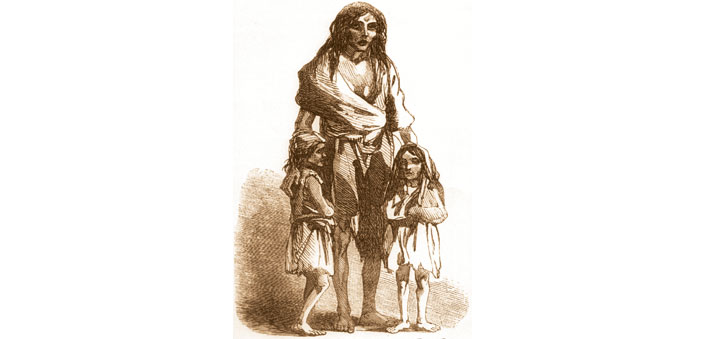Crop failure, grinding poverty, an insensitive government and a million deaths – this is the story of Ireland’s Great Famine (1845 – 51).
19th century Ireland was a poor country under British control with most of its population living on small rented farms. Poor farmers were heavily dependent on the potato crop for their livelihood and food – an average man ate about 4 – 5 kilos of potatoes everyday!
In September 1845, blight (plant disease) destroyed the potato crop. Thereafter, the crop failed for three consecutive years. Thence unfolded a human tragedy that devastated the lives, morale and economy of the Irish people.
With no potatoes and no money to buy food, vast numbers slowly starved to death or died from famine-related diseases like cholera, typhus and dysentery. Moreover, ruthless landlords began to evict them from their homes for failure to pay rent.
In desperation, a million people emigrated to Canada, USA and Australia. Hundreds were packed off in ill-equipped over-crowded ‘coffin ships’ where almost one in five died of disease or malnutrition.
The British Government devised inadequate measures to cope with the famine – the hungry masses were too poor to even afford the subsidized food being doled out. During the famine, England was still importing other food from Ireland. So food was going out of the country instead of feeding its starving people.
The Great Famine brought Ireland to its knees and left a deep sense of bitterness and mistrust against the British.
Fast Facts

